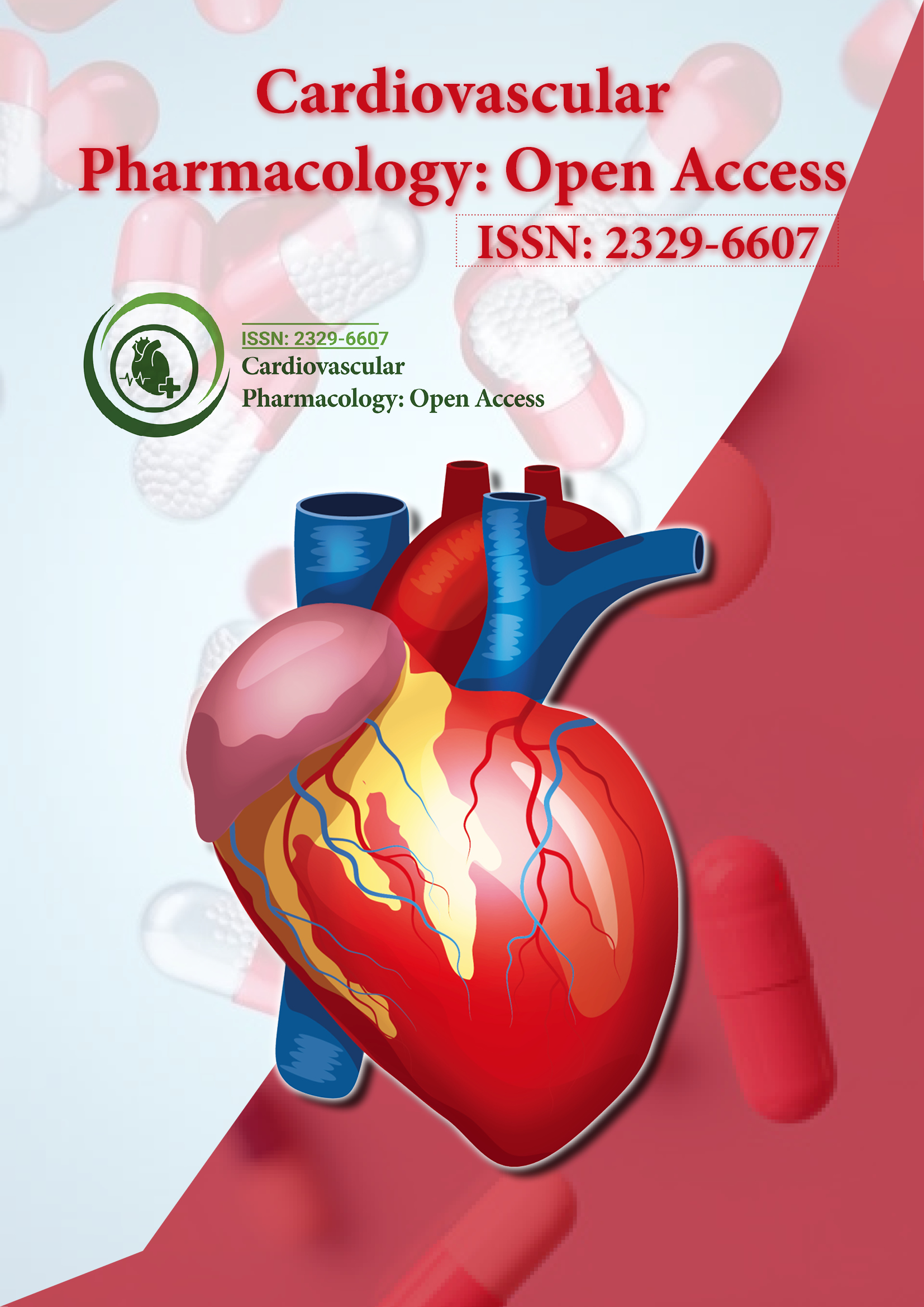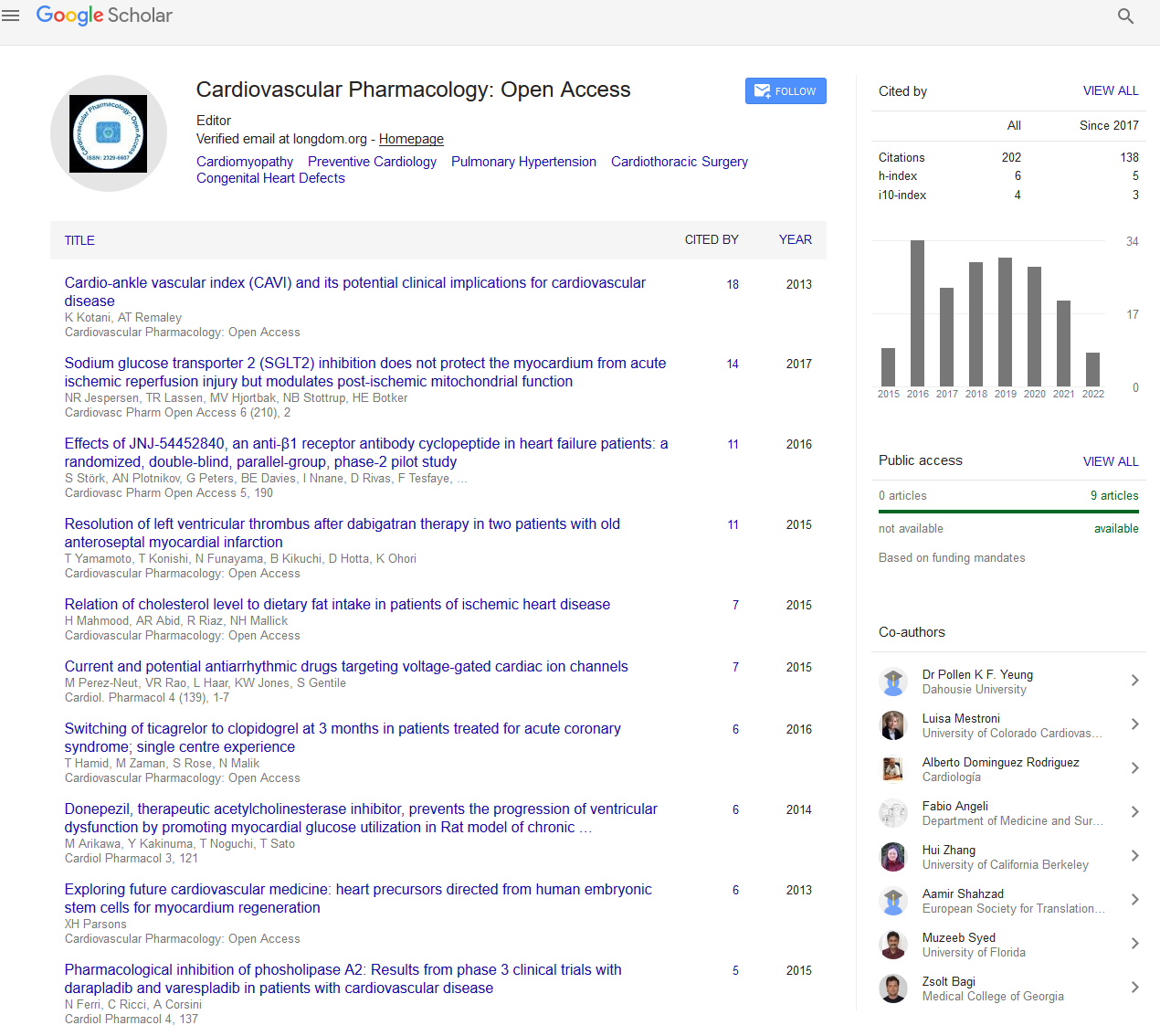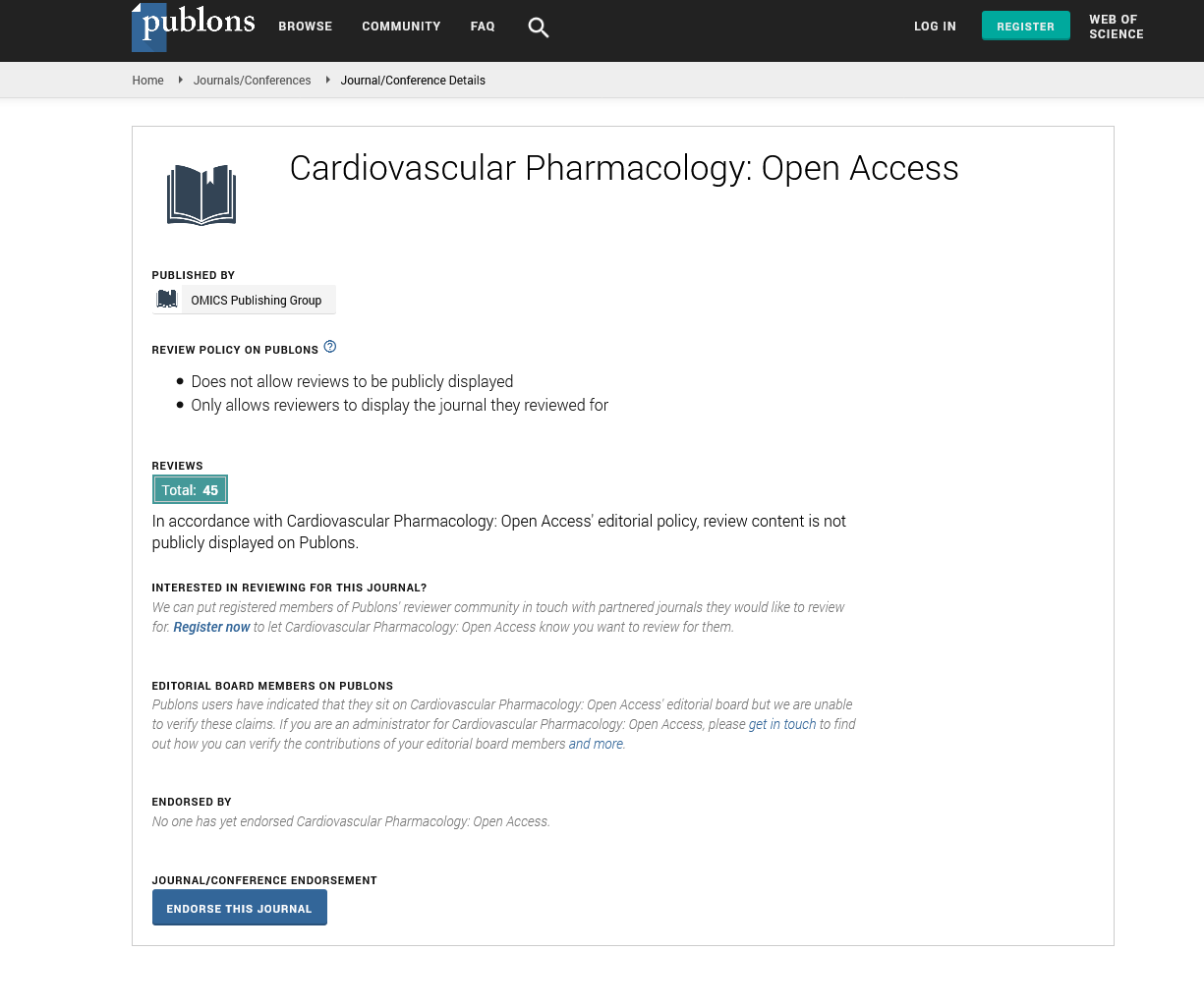Indexed In
- Open J Gate
- Cosmos IF
- RefSeek
- Hamdard University
- EBSCO A-Z
- OCLC- WorldCat
- Publons
- Geneva Foundation for Medical Education and Research
- Euro Pub
- Google Scholar
Useful Links
Share This Page
Journal Flyer

Open Access Journals
- Agri and Aquaculture
- Biochemistry
- Bioinformatics & Systems Biology
- Business & Management
- Chemistry
- Clinical Sciences
- Engineering
- Food & Nutrition
- General Science
- Genetics & Molecular Biology
- Immunology & Microbiology
- Medical Sciences
- Neuroscience & Psychology
- Nursing & Health Care
- Pharmaceutical Sciences
Commentary - (2025) Volume 14, Issue 1
Impact of Chronic Antihypertensive Use on Aneurysmal Subarachnoid Hemorrhage Recovery
Ekaterina Mikhailova*Received: 19-Feb-2025, Manuscript No. CPO-25-28929; Editor assigned: 21-Feb-2025, Pre QC No. CPO-25-28929 (PQ); Reviewed: 07-Mar-2025, QC No. CPO-25-28929; Revised: 14-Mar-2025, Manuscript No. CPO-25-28929 (R); Published: 21-Mar-2025, DOI: 10.35248/2329-6607.25.14.419
Description
The management of aneurysmal Subarachnoid Hemorrhage (aSAH) remains a clinical challenge, with significant morbidity and mortality despite advances in neurosurgical techniques and intensive care. Among the many variables that may influence outcomes, the role of pre-admission antihypertensive therapy has emerged as a topic of increasing interest. Hypertension is a well-known risk factor for aneurysm formation and rupture, but the specific influence of antihypertensive medication classes on post-hemorrhage outcomes has not been fully delineated. Recent studies have begun to investigate whether chronic antihypertensive use prior to aSAH onset might confer neuroprotective benefits, impact vasospasm risk, or influence early neurological deterioration and long-term functional outcomes.
The rationale behind this investigation is twofold. First, chronic hypertension may lead to vascular remodeling and increased fragility of cerebral vessels, predisposing patients to rupture. Second, some classes of antihypertensives particularly those with pleiotropic effects, such as calcium channel blockers and Angiotensin Converting Enzyme (ACE) inhibitors may alter cerebral hemodynamics, inflammatory pathways and endothelial function, thereby modulating secondary injury mechanisms following hemorrhage. Observational studies have suggested that patients on long-term antihypertensives may experience different trajectories in clinical outcomes compared to those not receiving such treatment.
Data from retrospective cohorts and administrative databases indicate mixed results. Some studies have found that preadmission use of antihypertensives is associated with reduced in-hospital mortality, improved neurological outcomes and a lower incidence of Delayed Cerebral Ischemia (DCI). These findings are particularly notable for agents such as calcium channel blockers, which may exert a vasodilatory effect beneficial in mitigating cerebral vasospasm. Conversely, other analyses have failed to detect a statistically significant benefit or have highlighted potential risks, such as hypotension in the acute phase that could exacerbate ischemic injury. The heterogeneity in study design, medication adherence, dosing and patient comorbidities limits the generalizability of current evidence.
Another critical consideration is the timing and mechanism of action of these agents. While chronic antihypertensive therapy may influence baseline vascular tone or reduce the risk of aneurysm formation, it is unclear whether their effects persist or remain beneficial during the acute management phase. Moreover, blood pressure control in the early post-hemorrhagic period must strike a delicate balance aggressive lowering may reduce the risk of re-bleeding but at the cost of cerebral hypoperfusion, especially in regions compromised by vasospasm or elevated intracranial pressure.
There is also a growing recognition that not all antihypertensives are equal in their impact on aSAH outcomes. For example, ACE inhibitors and Angiotensin Receptor Blockers (ARBs) have been associated with anti-inflammatory and neuroprotective effects in ischemic stroke models, but their role in hemorrhagic stroke remains uncertain. Beta-blockers, on the other hand, may blunt sympathetic surges following hemorrhage but can also reduce cardiac output, which might be detrimental in certain patients. Future research must aim to distinguish between these pharmacologic profiles and their differential effects on cerebrovascular pathology.
Given the limitations of retrospective studies, prospective observational studies and randomized controlled trials are necessary to clarify the relationship between specific antihypertensive classes and aSAH outcomes. Incorporating biomarkers of vascular inflammation, cerebral autoregulation indices and high-resolution imaging of cerebral perfusion could help identify mechanisms and guide individualized therapy. Stratification based on aneurysm characteristics, initial clinical severity and genetic predispositions may also provide insights into who might benefit from continued or reinitiated antihypertensive therapy in the acute setting.
In conclusion, while the association between pre-admission antihypertensive agents and outcomes in aSAH is biologically plausible and supported by preliminary data, definitive evidence remains elusive. The nuanced interplay between chronic vascular adaptation, acute cerebral hemodynamics and drug-specific effects necessitates a more targeted approach to understanding this relationship. Careful, mechanism-informed clinical trials and real-world data analysis will be instrumental in translating these observations into improved patient care strategies.
Citation: Mikhailova E (2025). Impact of Chronic Antihypertensive Use on Aneurysmal Subarachnoid Hemorrhage Recovery. Cardiovasc Pharm. 14:419.
Copyright: © 2025 Mikhailova E. This is an open access article distributed under the terms of the Creative Commons Attribution License, which permits unrestricted use, distribution, and reproduction in any medium, provided the original author and source are credited.


